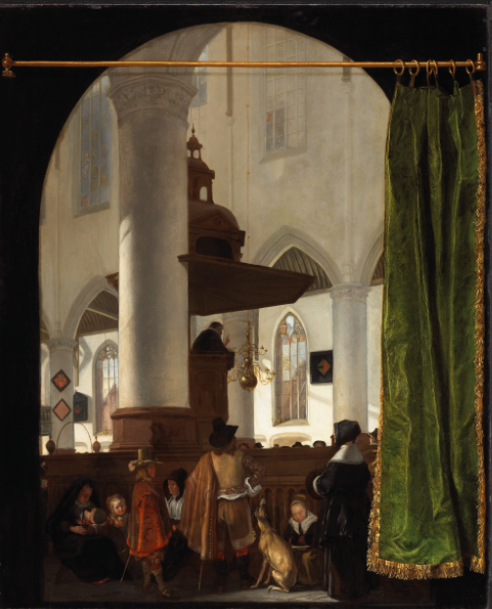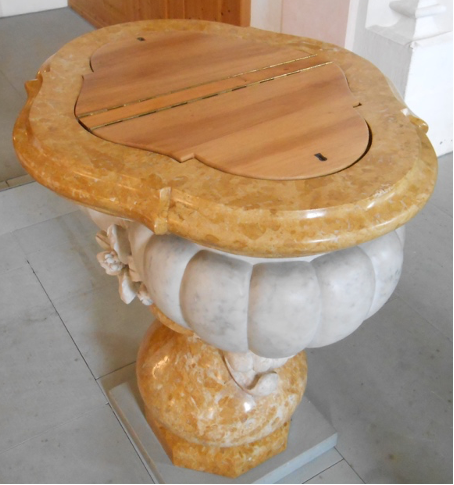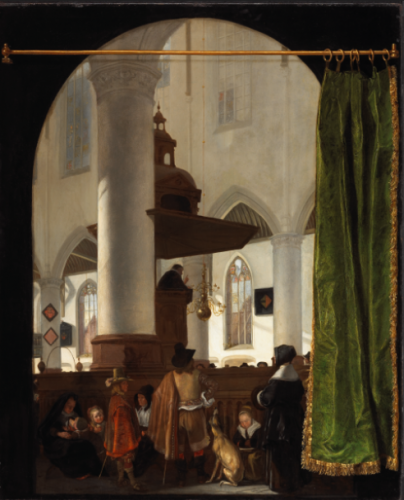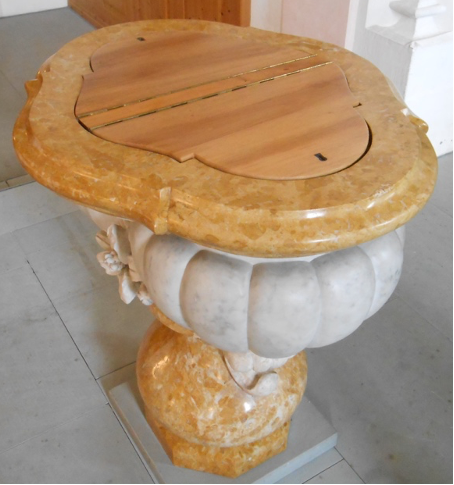Abstract
Parish churches have provided key places of sociability from the Middle Ages to the present. Particularly in premodern times, when attendance was expected if not mandatory, they accommodated members of both sexes, different age groups and representatives of poorer as well as more prosperous inhabitants. This entry focuses on the principal places of worship of the established confessions in a number of regional contexts over the long eighteenth century rather than gatherings of dissenters or other religious movements. Coverage includes sociability related to divine service, rites of passage, cultural events and political purposes. Attention is also paid to spatial settings, both in terms of the long-term evolution of interiors and the highly contested arrangements for seating and burial locations within churches.
Parishes can be defined as territorial units of ecclesiastical organization in which members of the clergy administer the cure of souls in return for financial support from their congregations. In Latin Christianity, a near-universal network had emerged in the late Middle Ages. Following the Reformations of the sixteenth century, people belonged to distinct – Catholic, Lutheran, Reformed, Anglican – denominations.2 Up to around 1700, each strove to forge a doctrinally homogeneous body of believers with internalized social discipline. In practice, the results of this ‘confessionalization’ process involving both Church and state remained patchy, as communities negotiated regimes reflecting local as well as central priorities.3 By this point, furthermore, parishes faced growing competition from dissenting groups and a small number of atheists. Nevertheless, religion continued to matter, even for most protagonists in the Enlightenment. The abolition of traditional religion by the French revolutionary regime proved an isolated and temporary interlude, with secular impulses linked to urbanization and industrialization prompting transformations within – rather than an outright collapse of – Christianity.4 Myriad forms of religious, social, cultural and political sociability focused on parish churches, not just in its European heartlands but many colonial contexts, too.
- 2. Beat Kümin, The Communal Age in Western Europe c. 1100-1800: Towns, Villages and Parishes in Pre-Modern Society (Basingstoke: Macmillan, 2013), esp. ch. 2.
- 3. John M. Headley, Hans J. Hillerbrand and Anthony J. Papalas (eds.), Confessionalization in Europe 1550-1700 (Abingdon: Routledge, 2016).
- 4. Rudolf Schlögl, Religion and Society at the Dawn of Modern Europe: Christianity Transformed 1750-1850 (London: Bloomsbury, 2021).
Documentation derives from a variety of sources, such as accounts of officeholders, minutes kept by vestries, sermons, prayer books, court proceedings, tithe maps and diaries, to name just a few (see the collation of church records for Earls Colne in Essex (1375-1854) and the list of churchwardens’ accounts for England and Wales hosted by My-Parish). Many were kept in large chests with multiple locks (as at Beckley in Sussex), preventing individual access. Sussex shopkeeper Thomas Turner, who served as East Hoathly’s overseer of the poor in 1756, relied on this repository of communal memory as well as the help of advisors to guide his actions:
‘[On 23 July 1756] we went down to the church to take Peter Adams’s bond [in which he committed to support a child fathered out of wedlock] out of the chest […] to ask Mr. Poole’s [Justice of the Peace from nearby Lewes] advice on it, who is at Mr. Porter’s [the parish minister] […] After dinner [Poole said that] we must execute the bond against him […] What I wanted to know was how to proceed against Peter Adams in [this affair].’5
- 5. David Vaisey (ed.), The Diary of Thomas Turner 1754-65 (Oxford: Oxford University Press, 1984), p. 55-56.
There were over 9,000 parish churches in England and perhaps 50,000 in the Holy Roman Empire alone. Often the most conspicuous buildings in local communities, they came in many variations, although most had a tower (fostering identities through a distinctive peal of bells) and a lay-maintained nave alongside a chancel under clerical control. Interiors ranged from bare whitewashed spaces centred on pulpits and communion tables (in Reformed areas) to proliferations of gold-plaited saints’ statues, colourful frescos and lavish altars (in Catholic Europe), the latter intended as a triumphalist rebuttal of Protestant austerity.6 In England, Baroque influences in Christopher Wren’s churches built after the Great Fire of London gradually gave way to classicist Palladianism during the eighteenth century and then the Gothic revival, illustrated for instance by Montreal’s Notre Dame constructed in the 1820s.7
Sociable gatherings
Foremost sociability occasions were the services held on Sundays and major feasts, supplemented by catechism classes for younger parishioners (for frequencies and participation see the visitation returns for Devon parishes in 1744 and 1779). Religious gatherings symbolized Christian unity and a state of charity among neighbours, while absences and excommunications signalled social exclusion. Restrictions of space, however, meant that not every individual attended all the time; what mattered was the presence of household heads, which included spinsters and widows. Clergymen expected the laity to listen to all readings and participate in the singing of psalms (in Protestant environments) or parish processions and confraternity feasts (in Catholic contexts). In practice, there were numerous distractions, ranging from snoring men via barking dogs to the groans of the devout (Figure 1).8 Thomas Turner usually went with his wife, making donations and taking communion (offered just a few times each year), evidently paying critical attention to what was said:
- 8. John Craig, ‘Psalms, Groans and Dogwhippers: the soundscape of worship in the English parish church, 1547-1642’, in W. J. Coster and A. Spicer (eds.), Sacred Space in Early Modern Europe (Cambridge: Cambridge University Press, 2005), p. 104-123.
‘[Diary entry for 20 June 1758] I must acknowledge […] the idle lazy way of preaching, which many of our clergy are got into, seeming rather to make self-interest the motive for the exercising their profession than the eternal happiness and salvation of men’s souls. […] I think the precept and practice in most (that is, in too many of us) is an opposite to each other.
[On 22 May 1763:] Myself and servant at church in the afternoon; the text Luke 24.49: "But tarry ye in the City of Jerusalem […]" The sermon we had this afternoon I have heard [parson] Mr. Porter preach 7 times with very little or any alteration.’ (Vaisey 130-1 & 271)
The vestry in the town of Dorchester (Oxon.) policed Sunday attendance as late as 1800. Its motives were not just spiritual, as people’s presence also facilitated the dissemination of important information, be it verbally from the pulpit or by affixing bills on church doors.9
- 9. David Eastwood, Government and Community in the English Provinces, 1700-1870 (Basingstoke, 1997), p. 30 (Dorchester). Announcements included government ordinances as well as ad-hoc appeals: William Cobbett, Important Considerations for the People of this Kingdom, published July, 1803, and sent to the officiating Minister of every Parish in England (London: C. Ricksby, 1803).
Across Europe, uneasy forms of confessional co-existence became enshrined in treaties, starting with the 1531 Peace of Kappel between Swiss Catholics and Zwinglians. In extreme cases, congregations of diverging beliefs even shared the same building, prompting back-to-back scheduling of services, pragmatic compromises (Figure 2) but also acrimonious conflicts.10 In England, where Catholic recusancy and Puritan separatism had eroded the parish monopoly since the Reformation, fundamental changes occurred in the Interregnum – when Presbyterianism became the state religion – and the Glorious Revolution – when the Toleration Act of 1688 officially allowed Protestant Nonconformist to attend their own places of worship.11 Drawing on indicators such as church attendance, clerical standards and tithe disputes, scholars have long veered between more ‘optimistic’ and ‘pessimistic’ assessments of how the Hanoverian Church negotiated challenges such as population increases and the early Industrial Revolution.12 There were local variations but also general fault lines (over e.g. loyalty towards the regime, the legitimacy of certain ceremonies or revivalist movements such as Methodism),13 not to speak of the unresolved relationship with the country’s Catholic minority which was not officially accepted until the nineteenth century.
- 10. Benjamin Kaplan, Divided by Faith: Religious Conflict and the Practice of Toleration in Early Modern Europe (Cambridge, MA: Harvard University Press, 2010).
- 11. Both inevitably caused tensions on the ground: Carys Brown, Friends, Neighbours, Sinners: Religious Difference and English Society 1689-1750 (Cambridge: Cambridge University Press, 2022), ch. 2.
- 12. Donald A. Spaeth, The Church in an Age of Danger: Parsons and Parishioners, 1660-1740 (Cambridge: Cambridge University Press, 2000).
- 13. For Methodism see Eastwood 32; for sample controversies e.g. Samuel Grascome, The resolution of a case of conscience, … whether … it be lawful to frequent our parish-churches (Oxford: s. n., 1688) and William Fleetwood, A Letter to an Inhabitant of the Parish of St. Andrew’s Holbourn, about New Ceremonies in the Church, 2nd ed. (London: James Kapton, 1717).
Other occasions for sociability included rites of passage – marriage vows exchanged in church porches, baptisms prompting (God)parents and families to gather around fonts, churching ceremonies readmitting mothers following a period of purification (one of the customs featured in George Crabbe’s poem The Parish Register of 1807) and funerals (supplemented by intercession in Catholic areas and funerary sermons in Lutheran contexts) - literally hundreds of thousands of the latter are documented in the Gesamtkatalog deutschsprachiger Leichenpredigten). Then there were seasonal festivities such as Easter, May Day or Christmas celebrations which many communities marked by drinking, dancing and/or the staging of plays. These revels had been most prominent in the late Middle Ages, but some survived the post-Reformation attacks on ‘popular’ culture and resurfaced in colonial contexts, too. In rural Québec around 1800, for example, parishioners remained ‘inclined to enjoy themselves more on religious holidays than the churchmen would have liked and many of them tended to be rather boisterous during solemn ceremonies’. Elsewhere, the ministers themselves enjoyed conviviality rather too much.14 Parsonages, too, hosted gatherings, be it for ad-hoc events or parish decisions; in some English villages – like Thurloxton (Somerset) – the poor customarily dined with the curate on Christmas day (Eastwood 29). Parish exchanges spilled over into further local hubs, prompting Surrey’s Grand Jury to remind the county in 1736 that public houses were intended for ‘the receipt […] of Travellers […] [rather than] the Entertainment & harbouring of […] Idle People to spend & consume their Money & their time in a lewd and drunken manner’ (Eastwood 37). Nor should we forget that streets and commons could resound with boisterous ‘rough music’, i.e. shaming rituals directed against neighbours perceived to have violated customary norms, as when women appeared to rule over men or couples failed to produce children.15
- 14. Robert A. Houston, Bride Ales and Penny Weddings: Recreations, Reciprocity and Regions in Britain from the Sixteenth to the Nineteenth Centuries (Oxford: University Press, 2014); Allan Greer, Peasant, Lord, and Merchant: Rural Society in Three Quebec Parishes 1740-1840 (Toronto: University Press, 1985), p. 113 (quote);
- 15. A suggestive enactment of charivari appeared in a film based on Natalie Zemon Davis’s The Return of Martin Guerre (Paris: R. Laffont, 1982).
Representations, tensions and developments over time
All of these interactions involved complex blends of religious and social components. Local hierarchies, for example, found expression in burial locations, the most prestigious sites being within the church rather than in the churchyard or – as increasingly common from the early modern period – cemeteries located on the outskirts of communities. Numerous monuments, ranging from memorial brasses via stone effigies to family mausoleums, ensured that even long-gone dignitaries retained a form of presence. At St Saviour, Southwark, an eighteenth-century survey featured no fewer than 39 monuments, including ‘a fine black and white marble tomb, on which lies the image of the prelate of the garter [Bishop Lancelot Andrewes] in his robes’, with a Latin inscription.16 Social gradations became equally tangible in seating arrangements. Members of the better sort – landowners, merchants, yeomen, principal officeholders – sought to secure the most sought-after locations near chancels, altars or pulpits, while lesser parishioners – composed of artisans / shopkeepers / husbandmen, labourers, deserving poor and servants – had to make do with positions towards the rear or on galleries. It is no coincidence that Richard Gough chose to structure his famous 1701 account of Myddle in Shropshire by pew order.17 Immediately after the construction of a new church at Sulzbach near Frankfurt a.M. in 1729, ‘the whole commune’ with the consent of parson and wardens agreed a seating order for 25 pews (most holding several individuals), according to which the first – raised and facing the pulpit – accommodated the village mayor with the seven oldest court jurors, the second the seven younger jurors, the third the parson / schoolmaster families etc., all the way down to one assigned to a poor widow.18 In the Anglican churches of colonial Maryland (of which an original 18thC example survives at St Paul’s Brandywine), in contrast, where nothing ‘caused greater problems than the assignment of […] pews’, a radically different solution started to gain traction. In 1755, the vestry of Trinity parish, Charles County, decided to resort to a lottery, overruling protests that ‘such a manner of acting is quite opposite to the usage of our mother Country’.19 From the European Continent via the British Isles to the North American colonies, therefore, pew regulations – and of course prices – proved major bones of contention.
- 16. Matthew Concanen and Aaron Morgan (eds.), The History and Antiquities of the Parish of St Saviour’s Southwark (Deptford-Bridge, 1795), starting p. 91 (Andrewes 99). See also the Church Monuments Society and Elizabeth Tingle and Jonathan Willis (eds.), Dying, Death, Burial and Commemoration in Reformation and Counter-Reformation Britain and Europe (Farnham: Ashgate, 2015).
- 17. Richard Gough, The History of Myddle, ed. David Hey (New York: Dorset Press, 1986).
- 18. The full order is printed in Sulzbach und seine evangelische Kirche 1724-1794 (Sulzbach: Kirchengemeinde, 1974), p. 28-29.
- 19. Gerald E. Hartdagan, ‘The Anglican vestry in colonial Maryland: a study in corporate responsibility: Part Two’, Historical Magazine of the Protestant Episcopal Church (vol. 40, n° 4, 1971), p. 461-79, p. 461-2; on local challenges to colony-wide regulation in Québec (Greer 113-15).
In the long eighteenth century, reflecting a growth of leisure activities including proto-tourism, parishes started to invest in attractive environments. Paying for landscaping work in 1702, the vestry of Finglas in Ireland ordered ‘that the said hill be kept open and adornd with trees and that it be no mans property, and that any who shal place any nusance there be presented by the church wardens’.20 Other churches became visitor attractions in their own right. On her journeys through England, Celia Fiennes – doubly notable as an early leisure traveller and a female voice – liked to frequent local sights like sites of worship. At Derby in 1698, for example, she saw one whose
- 20. Maighréad Ní Mhurchadha (ed.), The Vestry Records of the United Parishes of Finglas, St Margaret’s, Artane and the Ward, 1657-1758 (Dublin: Four Courts Press, 2007), p. 119.
‘[…] tower was finely Carv'd full of niches and Pedistals where on Statues had been set, but nothing worth notice in ye jnside except a monument wch was over ye vault of ye Duke of Devonshire, on wch stands 2 Effigees at length all of white marble […] with an arch or Cannopy of Stone.’21
- 21. Cited from the online edition. Celia Fiennes, ‘1698 Tour: Staffordshire’, A vision of Britain, 2009-2017. https://www.visionofbritain.org.uk/travellers/Fiennes/21
A Swiss village church near Bern established itself as an unlikely tourist destination. An evocatively carved tombstone for Maria Magdalena Langhans, the pastor's wife who had tragically died during childbirth in 1751, adorned with a poem by Enlightenment scholar Albrecht von Haller, became one of the most admired artefacts of the period. Celebrity visitors included Johann Wolfgang von Goethe, who found that ‘the tomb of the Hindelbanck [was] a subject about which one could read a long chapter. I wish I were able to write everything down right now.’ (cited from an online edition of a letter dated 20 October 1779) Even souvenirs were available for purchase, including a terracotta reduction now held by the British Museum.
Political sociability
Last but not least, each church reverberated with ‘a distinctive parochial political culture’ (Eastwood 26). Preachers often touched on current affairs, admonishing secular authorities not to stray from a Christian path. Notable English examples are the sermons to Parliament delivered in the parish church of St Margaret adjacent to the Palace of Westminster, or – in various county towns – addresses to Assize Judges, Quarter Sessions and High Sheriffs. On 9 August 1713, William Hartwell instructed Northumberland’s Grand Jury assembled in St Nicholas, Newcastle-upon-Tyne, on righteousness as a prerequisite for salvation. Normally, of course, audiences were of humbler standing. At Holy Trinity, Hull, on 12 February 1792, vicar Thomas Clarke reminded his flock of the injustices of the slave trade, arguing that they had to do to others as they wanted to be done to themselves, regardless of setting or colour.22 Further south in Sussex, Thomas Turner recorded numerous ‘political’ addresses. On Sunday 27 August 1758, for example, ‘[i]n the morn my wife and self both at church […] [w]e had a form of thanksgiving read today on the account of taking of the harbour of Louisburg’, while on 25 November 1759, there was ‘a proclamation read for a day of general thanksgiving to Almighty God for his manifold mercies vouchsafed to this our happy isle’ (Vaisey 161, 194). At times, however, parishioners could turn assertive, whether in domestic or colonial environments. At St-Joseph-de-Beauce in Québec during the American Revolution, an assembly of inhabitants held in June 1775 ‘unanimously decided to disobey Governor Guy Carleton’s call for the militia to take up arms and ignored the exhortations of the […] curé to do so. [Their] seigneur, Gabriel-Elzéar Taschereau, was not even permitted to speak’. Local pro-American sentiment led to a warm welcome for the US invasion army when it passed on its way to besiege Québec City. At Astley in Lancashire, to take a more mundane example, chapelgoers resisted the attempt of their parish incumbent, Joseph Hodgkinson, to present to their curacy in 1822, instead holding their own election in which a mere 16 of 305 householders supported the vicar’s preferred candidate.23
- 22. William Hartwell, A Sermon preached in the Parish Church of St. Nicolas, in Newcastle upon Tine … Published at the Request of the High Sheriff (Newcastle upon Tyne: Printed by John White, 1713); Thomas Clarke, A Sermon on the Injustice of the Slave Trade (Hull: Printed by J. Ferraby, 1792).
- 23. Frank Albert Abbott, The body or the soul? Religion and Culture in a Quebec Parish, St-Joseph-de-Beauce, 1736-1901 (Montreal: McGill-Queen’s University Press, 2016), 43; Eastwood, Community, 38.
In summary, therefore, parish churches ranked among the foremost sociability sites in pre-modern communities, attracting men and women not just for religious worship. Closer examination of their gatherings allows us to gain a better understanding of both popular interactions and the structures of local societies in the long eighteenth century.
Share
Further Reading
Brown, Carys, Friends, Neighbours, Sinners: Religious Difference and English Society 1689-1750 (Cambridge: Cambridge University Press, 2022).
Pounds, Norman J. G., A History of the English Parish: The Culture of Religion from Augustine to Victoria (Cambridge: Cambridge University Press, 2003).
Schlögl, Rudolf, Religion and Society at the Dawn of Modern Europe: Christianity Transformed 1750-1850 (London: Bloomsbury, 2021).
Snape, Michael, The Church of England in Industrialising Society. The Lancashire Parish of Whalley in the Eighteenth Century (Woodbridge: Boydell and Brewer, 2003).
Tate, William E., The Parish Chest: A Study of the Records of Parochial Administration in England, 3rd ed. (Cambridge: Cambridge University Press, 1969).



